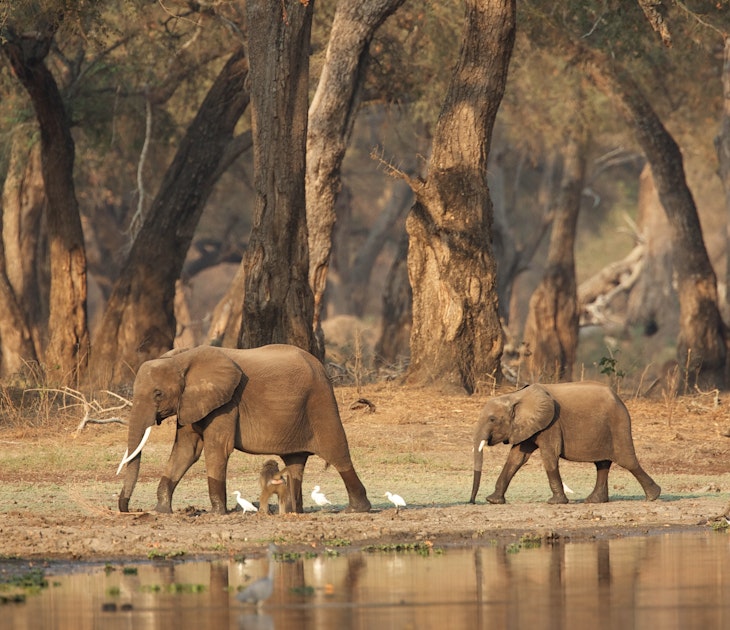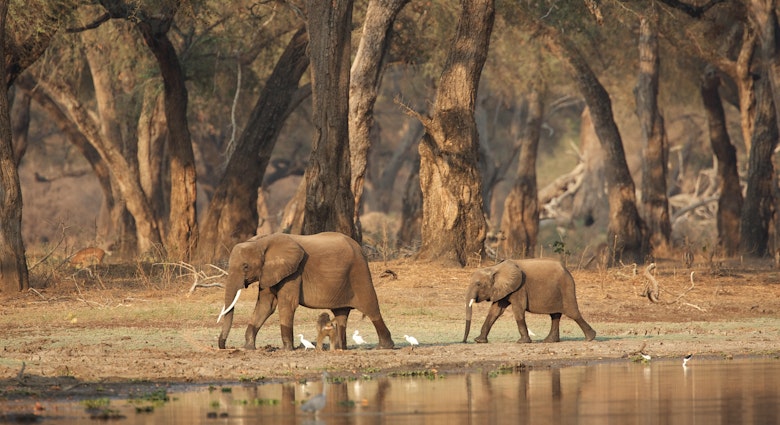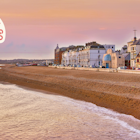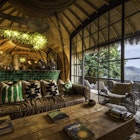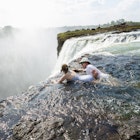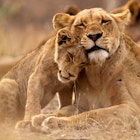'The white lions don’t exist,' my safari guide says with a smile and twinkle in his eye, 'they are just myths.'
Indeed, whispers of these lions have emanated from the lands of Timbavati and southern Kruger in South Africa for centuries. But today three of them are known to exist in the wild, two of whom are found within the 148-sq-km Ngala Private Game Reserve. Sitting in the heart of the region, Ngala means lion in the language of the local Shangaan people.
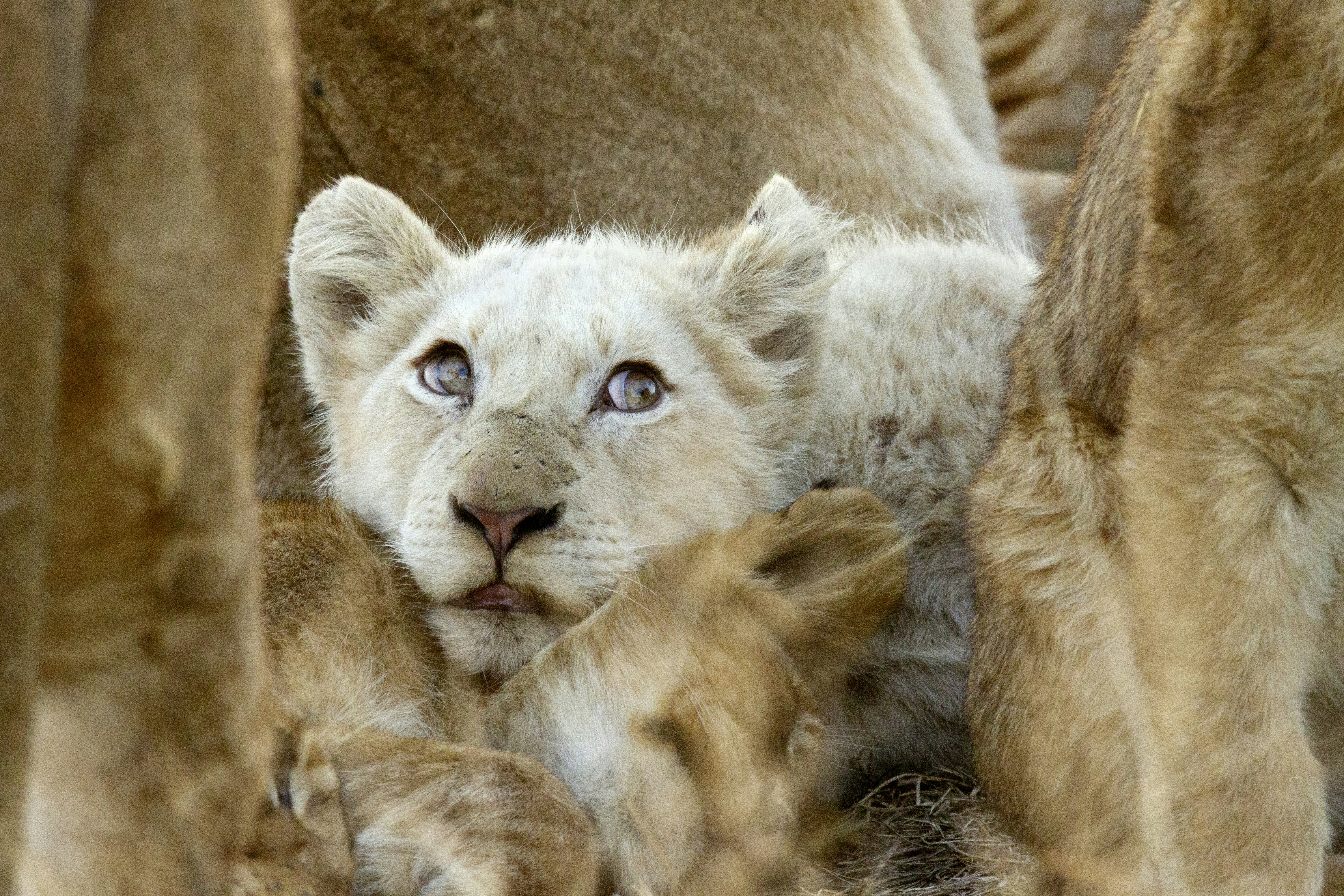
I tell Dyke Khosa – a man with 28 years of safari guiding experience – that seeing a white lion in Ngala would be a dream come true. His experience of the region extends far beyond his time as a guide; his instinct for the wild is ingrained within him. While growing up, he would spend weeks at a time in the wild searching for various ingredients with his grandfather (a traditional healer), and it wasn’t unusual for him to be sent back to his village alone through miles of bush to fetch needed items. After stepping into the footprint of a lion for the first time, which as a small boy engulfed his own, he had no choice but to quickly learn how to interpret the land and its wildlife around him.
"I have lived my entire life in this area and the white lions were only animals spoken of in stories told by elders"
Until two years ago the white lions were just what Khosa says, a myth. But sporadic sightings have always existed. The gene that produces the ivory white fur is a rare mutation endemic to this small region of Africa, the only place where white lions have been found in the wild.

Against all odds
In 2017, two lionesses from the Birmingham pride – the largest in Ngala – gave birth to seven cubs. After decades without a single white cub birth, and much to everyone’s astonishment, three of them were white. But the excitement brought by the trio was quickly extinguished when two males, known as the Ross males, fought for the Birmingham pride and won. To ensure their own lineage, much to everyone’s sorrow, the pair killed all of the cubs.
Just half of lion cubs live to one year old, and it’s thought the odds are even less for a white cub. Khosa tells me that being able to blend into the bush is essential for a cub; they are often left on their own while the adults hunt, which makes them extremely vulnerable to predators.
White lions are incredibly anomalistic because their white fur is engineered by an extremely rare leucistic gene. It creates a partial loss of pigmentation, but unlike albinism, they still retain colour in other features. What’s more, the gene is recessive, meaning that both parents – even if they themselves are tawny coloured – must carry the gene to produce a white cub. The gene for the first time in centuries is eluding all improbabilities. In October last year, a few months after the Ross takeover, one of the lionesses of the Birmingham pride gave birth to a strong and feisty white male. Another lioness gave birth to a female shortly after.
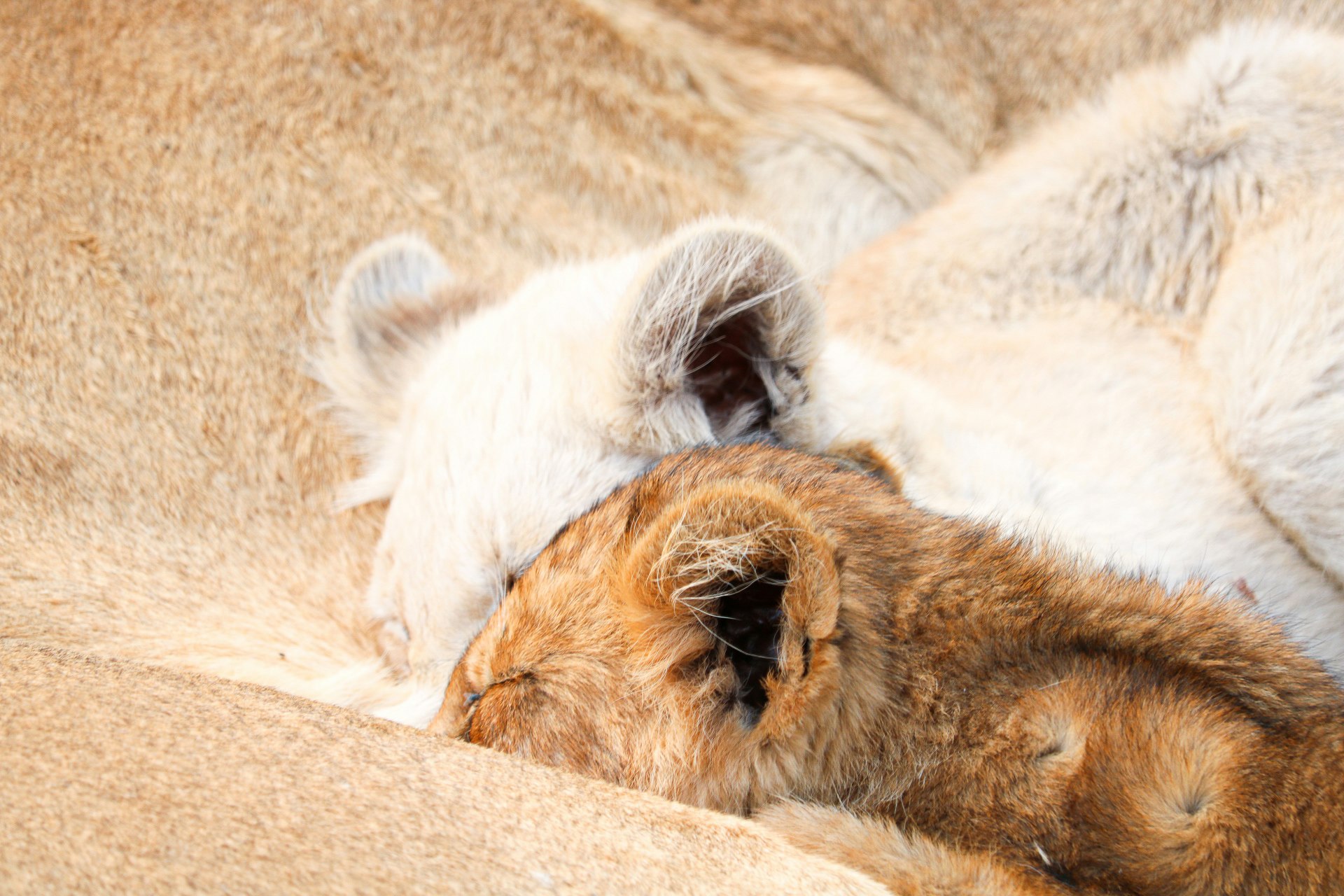
Searching for treasure
In the bitterly cool morning, wrapped in thick blankets, we set off shortly before 6am. It is incredibly peaceful and humbling to be in the solitude of the African wilderness. Geddes, Khosa’s tracker, scours the bush with a spotlight, every now and then catching the reflection of a pair of bright eyes. It is my final morning in Ngala, and although we have found the Birmingham pride, the white cubs are nowhere to be seen.
Khosa drives to pick up his early morning report, which he calls the 'bush telegraph'. A succession of animal footprints break the surface of the dirt track, which Khosa begins to read and analyse. He can decipher which animals moved through here overnight. He slows down as something catches his eye and jumps out of the jeep to continue at a pensive pace.
"I think the main pride has split. These are the tracks of two adult females and three cubs"
Almost invisible to my eye he points at small disturbances in the undergrowth and says, 'They’re moving in that direction." With his impeccable knowledge of the reserve, he can predict with reasonable confidence where he thinks the lions are heading.
In Ngala it is forbidden to follow tracks off road in a vehicle unless the exact location of one of the Big Five (lion, leopard, buffalo, elephant and rhino) is known. Geddes, armed with nothing but a radio and rifle, heads off by foot. Khosa believes these are the footprints of the white lions and that the pride has split because the white cubs give away the main pride’s position, preventing them from hunting effectively.

White lions
A few hours later when I’d lost all hope, Geddes radioed to say that he’d found the cubs. We were now heading deep into the bush attempting to follow directions only possible in Africa: "Halfway along the second track from the channel head east, you’ll see a line of burnt knobthorn trees; drive towards the tallest one and you’ll come across a termite mound, they’re 30m north of there."
My adrenaline begins to pump as we race towards the pride. Once off road it’s difficult to follow Geddes’ directions. Shrubs and trees scatter the savanna and it takes skill to head towards the tallest knobthorn. We eventually find the termite mound, and we know that they are close. A flash of white catches my eye, and rolling on his back underneath the bush is the 10-month-old male cub, looking at me with sparkling eyes.
The younger female jumps over her tawny brother and pushes him out the way to nurse on her mother’s teat. The white cubs are distinctly bigger than tawny cubs of the same age, which is apparent between these two. Their personalities were also markedly bolder, they both jump around competing for attention. Khosa believes these traits aren’t accidental and their feistiness is a characteristic developed to help counteract the hindrance of their white fur.
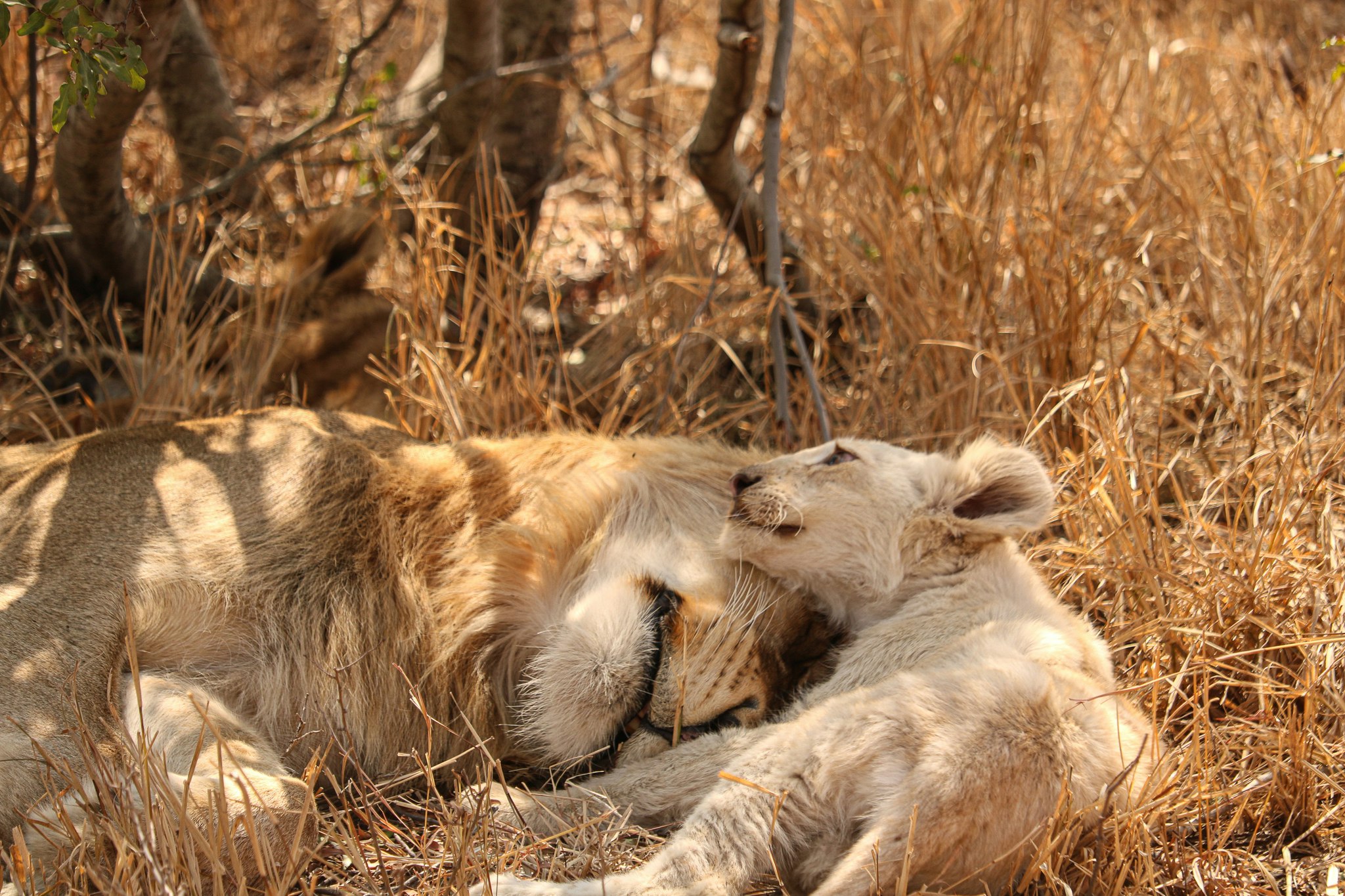
The future
Lions are living under huge pressures, including habitat loss and the illegal wildlife trade. The lion population in Africa has halved in 25 years. The &beyond team at Ngala is passionate about conservation, and it using several strategies to protect the land, wildlife and communities. These range from de-horning rhinos to providing education and sustainability for the local people, the latter two being a foundation for future conversation in itself.
For the white lions of Ngala, the best chance of survival means living relatively undisturbed in the protection of the reserve, where a number of strict viewing policies have been put in place by &beyond. These include a restriction in the number of vehicles at sightings, and a complete prohibition of viewing if the cubs are separated from the adults. However, there is no fence between the reserve and neighbouring Kruger National Park, where there are no such restrictions. The cubs are also supported by being a part of a large pride, who can successfully hunt for them.
As we drive away, I spot Khosa smiling to himself. Until recently he never thought he’d have the privilege of seeing a white lion, so he regards each encounter just as special as the last.
"For the first time in decades, we are starting to see an increase in the number of white cubs born. We know this unique gene pool is slowly growing. Hopefully this will ensure that for my children’s children, our lions remain more than just myth"
You might also like:
'Bears at 10 o’clock': keeping your nerve with 10,000 brown bears in Tongass National Forest
My life as an expedition doctor
Where you should go on your first safari in Africa

